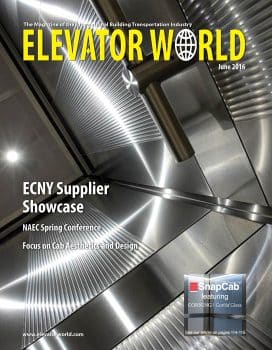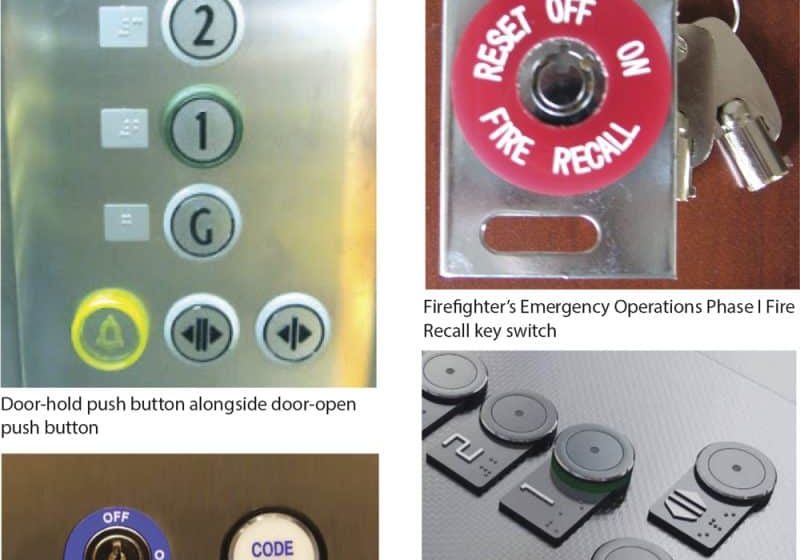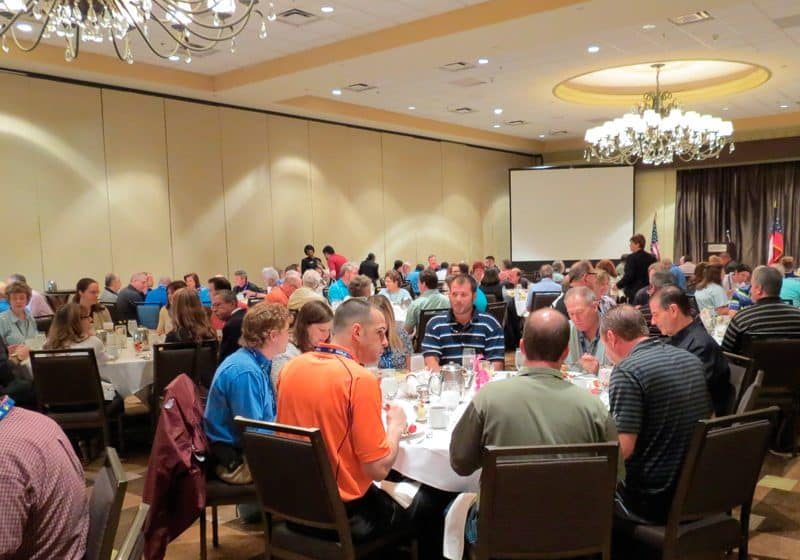“It is man’s desire to function in beautiful, artistic, uplifting spaces.” — L. J. Blaiotta
My mother used to tell me, “Pretty is as pretty does,” which made me straighten up my act quickly. This certainly applies to modern elevators. In this issue, we focus on the way the elevator looks. It would be easy to dismiss cab aesthetics as just the “pretty face” of the job. However, the way the cab looks says everything about the building in which it lives. The lobby sets the tone for a building, and the elevator carries that impression up into the rest of the building. No matter how beautiful the building, an elevator that is dark, dirty or dated will give the impression that the rest of the building is just a façade. So, too, the beautifully appointed elevator cab cannot hide equipment that is poorly maintained or unsafe. That reminds me of another old Southern saying; “It’s like putting lipstick on a pig” (It’s still a pig).
Our special section this month contains everything you ever needed to know about Cab Aesthetics and Design from the leading experts in that business. Our cover is a Corning® Gorilla® Glass application by SnapCab. In A Perfect Fit, EW’s Kaija Wilkinson describes how SnapCab was started in 1995 by a woodworker and grew with a patented technique of interlocking panels. The recent collaboration with Corning has caused “explosive” growth in the company. We have a feature by Columbia’s Ralph Newman, Elevator Cabs as Art, which outlines the history of the cab as it moved from purely utilitarian to increasing attractiveness. Newman credits C.E. Electronics with breaking into the digital display area in cabs with news and stocks. Some elevators go beyond the display of information and become an “experience,” like those at One World Trade. Samson Babu, in Elevator Signal Fixtures and User Features gives a very complete review of almost every appliance and service available in a cab — from TV, voice recognition, card readers and much, much more. In Where Does Engineering Meet Art, Sam Bahbot of Vertical Dynamics writes about the value of using 3-dimensional renderings to show the customer exactly what they will get. On the other hand, Andy Heiser speaking for FabACab, in More than Just Design, believes that when picking cab interiors it is important to explore the building traffic and the users. Brian Schoonmaker of i2Systems opines it is just as important how you light the situation. In Let There be Light!, he writes that too bright can be just as bad as too dark in a cab. Nick Lehmann with thyssenkrupp urges those in charge of modernizing equipment to consider including cabs in a “mod job.” In More Than Mileage, he writes that the impression given by the cab can cancel all the good work done in an equipment changeover. Bill Swenson with Concept Elevator Group writes in Pre-engineered Elevator Cab Solutions, just how easy that changeover can be with pre-engineered panels and clips from a wide selection. In Building on a Legacy, EW’s Lee Freeland relates how Eklund’s has grown from the company that Jim Eklund built to a much larger company that Eklund’s daughter, Beth Cunningham, presides over with help from his two grandsons. Together, they run Streamline Cab Design Studio inside Eklund’s, providing virtual cab prototypes.
Our features this month include the curving EZ Towers in São Paulo where two glass lobbies are joined by a 20-meter waterfall. Atlas Schindler installed their Port system (destination control), which was the first use of that technology in Brazil.
Two events round out the issue. In New York City (NYC), the Villa Barone Manor hosted the seventh annual ECNY Supplier Showcase with 95 exhibitors, using every inch of space. This event is such a bargain that they have a waiting list from around the country. Visitors and exhibitors alike are packed in and no one complains about it. The event is “old home week” in NYC and is as much about food as it is about elevators.
A week later, the National Association of Elevator Contractors (NAEC) celebrated their Mid-Year Education Conference in Savannah, Georgia. This place exudes Southern history and, while the group soaked it up, they also enjoyed a wide range of educational opportunities. Conversations over mint juleps included: how to find good field techs; are MRLs good or bad; would you take a customer to a machine room without advance notice; and how will the Maintenance Control Plan affect companies.
This book is packed, folks. Enjoy!
Get more of Elevator World. Sign up for our free e-newsletter.








